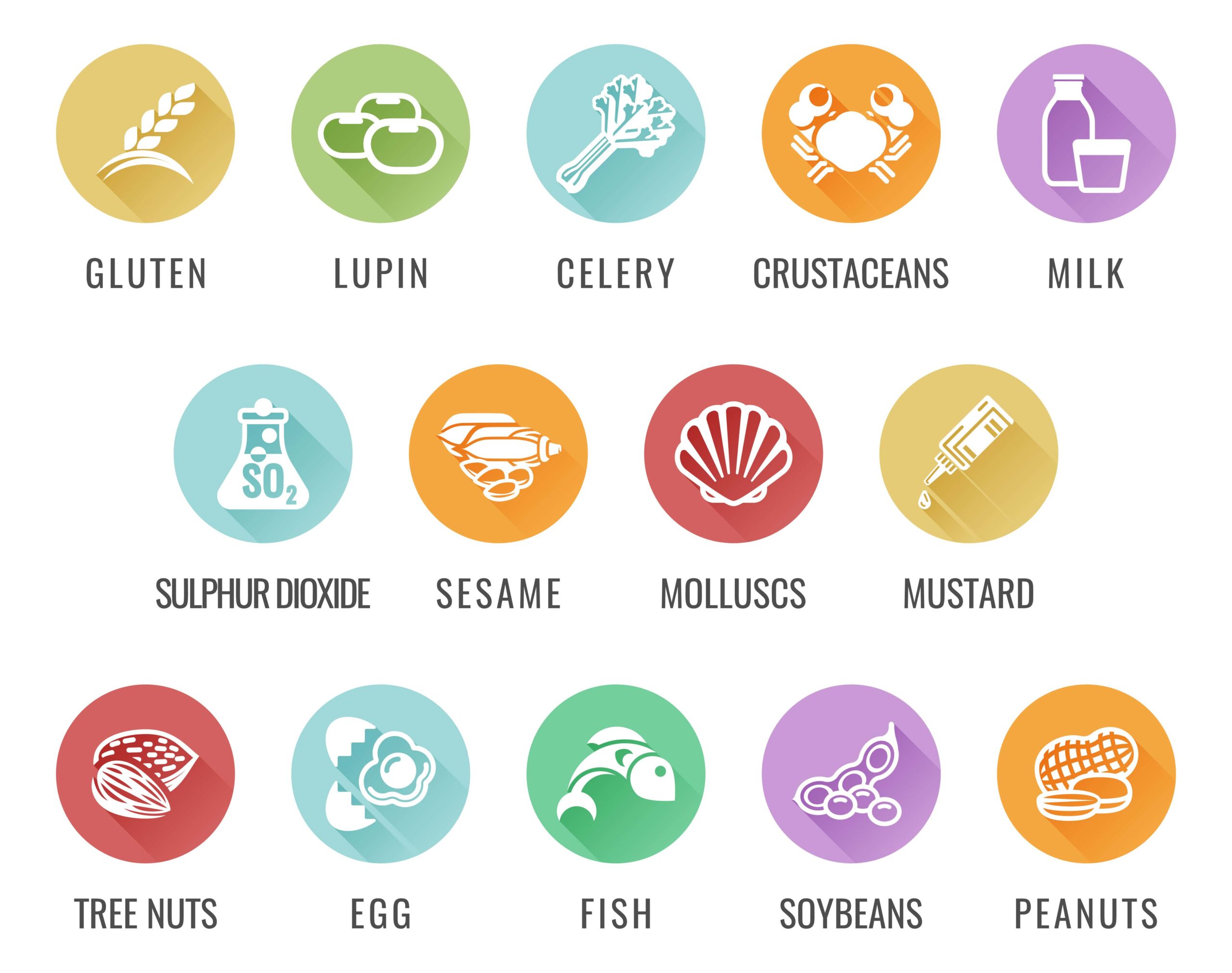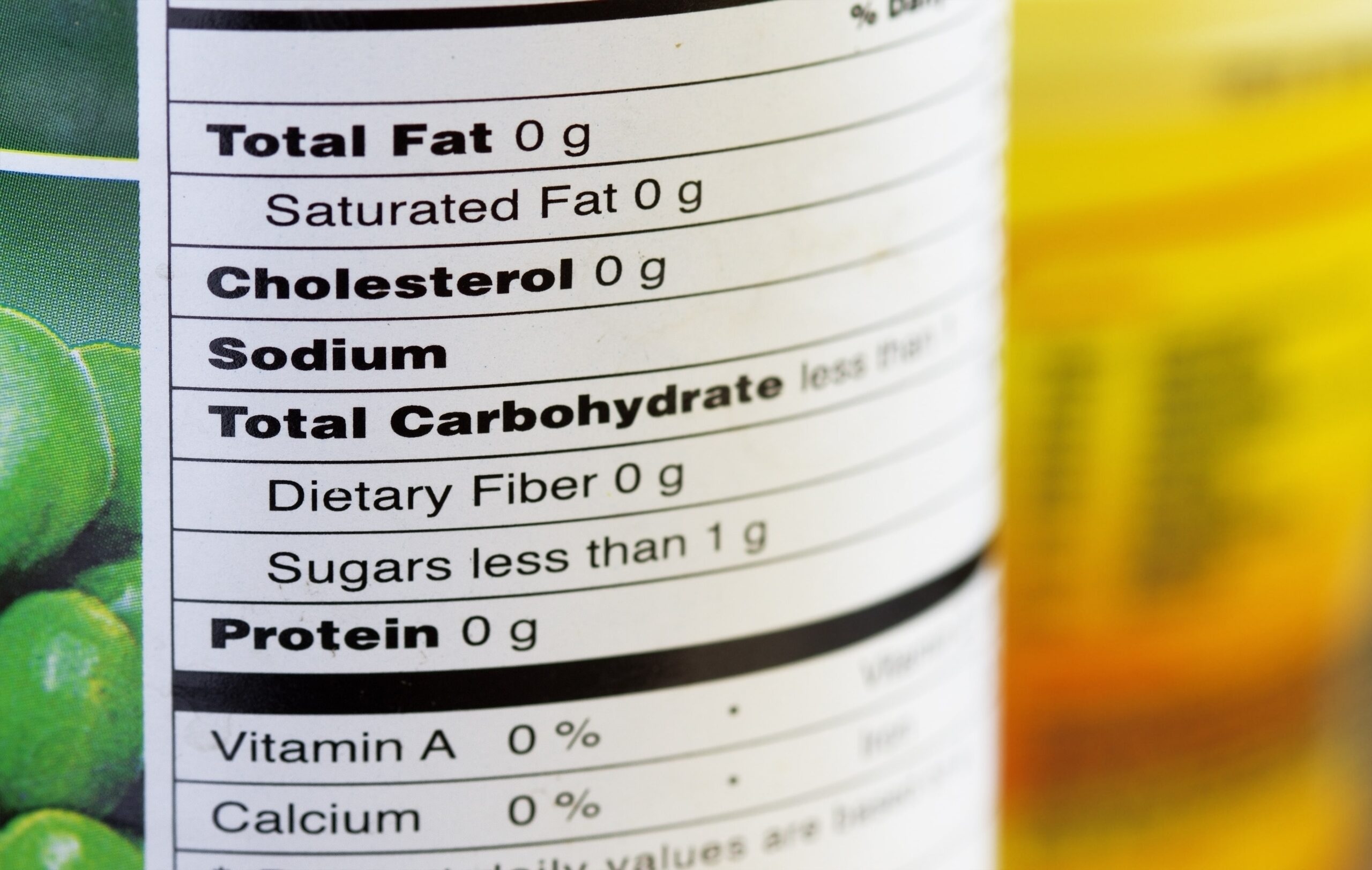How to read food allergy labels and stickers shouldn’t go unmissed. If you have an allergy or allergic reaction, you must know what you will be eating, so it doesn’t cause any unnecessary visits to the hospital or unpleasant experiences.
We will go over where you can find out where they’re located on food products, how you can read them, and make your life as easy as it can be!
The Law
FSA (Food Standard Agency) has introduced new legislation, which came into force in October 2021, known as the “Natasha’s Law.” This new legislation requires all businesses to label pre-packed food for sale with a complete list of ingredients and the 14 allergens emphasised in bold.
The new legislation will also apply to food packaged on the same site it will be sold—for example, sandwiches. Even products from supermarket food counters, such as fresh meat, fish, or cheese, have been wrapped and ready to be served and purchased. Furthermore, allergen labels on food must not be misleading to make sure as a consumer you can make the right choices when purchasing,

Allergens
What are allergens?
An allergen is a type of antigen that produces an abnormally vigorous immune response in which the immune system fights off a perceived threat that would otherwise be harmless to the body. Such reactions are called allergies.
There are 14 allergens in total, they are,
- Celery
- Cereals including gluten
- Crustaceans
- Eggs
- Fish
- Lupin
- Milk (Cows)
- Molluscs
- Mustard
- Nuts
- Peanuts
- Sesame seeds
- Soya
- Sulfur dioxide (sometimes known as sulfites)
How To Read The Food Allergy Label
We now know the new legislation from the Food Standard Agency and the 14 different allergens that are out there. How do we go about reading them and learning how to spot them. Below you will find an example of a food product ingredients, see if you can notice anything that stands out,
Allergy Information
For allergens, including cereals containing gluten, see ingredients in bold.
As you can see from the ingredients and the allergen information provided by Tesco, the BOLD words will be the ones to look out for when shopping for your foods for allergen information; see below for another example.
Ingredients label for Tesco 8 Plain Tortilla Wraps,
“INGREDIENTS: Wheat Flour [Wheat Flour, Calcium Carbonate, Iron, Niacin, Thiamin], Water, Palm Oil, Humectant (Glycerol), Raising Agents (Disodium Diphosphate, Sodium Bicarbonate), Sugar, Emulsifier (Mono- and Di-Glycerides of Fatty Acids), Acidity Regulator (Citric Acid), Salt, Preservative (Calcium Propionate), Flour Treatment Agent (L-Cysteine Hydrochloride).”
Allergy Information
For allergens, including cereals containing gluten, see ingredients in bold.
From the two examples, you can see that the 14 required allergens have been highlighted bold to make it obvious and stand out when you go out and purchase your food.
Ingredients label for Tesco Chicken & Bacon Pasta Bake 450G
INGREDIENTS: Skimmed Milk, Cooked Pasta [Durum Wheat Semolina, Water], Chicken Breast (14%), Water, Mature Cheddar Cheese (Milk), Cooked Beechwood Smoked Streaky Bacon (3.5%) [Pork Belly, Salt, Preservative (Sodium Nitrite), Antioxidant (Sodium Ascorbate)], Cornflour, Medium Fat Soft Cheese (Milk), Single Cream (Milk), Soured Cream (Milk), Garlic Purée, Pork Gelatine, Salt, Black Pepper.
Precautions And Other Allergens
When checking your food products before purchasing, you will now know to look out for the bold words to see what allergens are in that particular food.
However, you will need to keep your eye out for labels that have precautionary warnings, such as “may contain” or “made in a factory.” These will be located on foods brands with potential cross-contamination of allergens. A typical reference for this is the label stating, “may contain nuts” or “made in a factory that handles nuts.”
While reading the allergen labels, you will also need to be aware that not all allergens fall within the list of 14 stated above. So please take extra precautions reading if you have allergens outside of the 14.

Tips to remember
You are equipped with knowledge of how to read allergen labels. Even what to look out for if its precautionary labels on food products. But don’t go out there just yet, as there are standard practices you will want t to undertake, especially if you have allergies.
You’ve checked allergens on food purchases, but be sure to check regularly, as food manufacturers can change the ingredients up, and therefore the allergens may change. An example is if the packaging has changed as now, including “new taste/recipe.” When eating out or buying loose food, be sure to ask about the precautions taken or any change of cross contaminations. In addition to allergy stickers here at Price Stickers, we are proud to offer general food stickers, and feedback stickers among others. If you would like advice on the right option for you or would like to learn more about us, contact us today.

